Pelforth Pale 4 Liter can: 1970s
This month I want to show a French can I recently picked up. I don't collect many gallons (or other large sizes). There just is not enough room in my can area. But, I have a few with designs that really caught my eye, and this was one of them. In Britain this size can is often referred to as a "Party Can" and I have a small side collection of them with labels featuring people partying. In addition, I recognized the artwork on the can and thought it was interesting that the French brewery picked a 16th century Flemish painting for the design. The theme, people having fun and dancing in a somewhat inappropriate manner at a wedding, seems somehow fitting for a "Party Can."
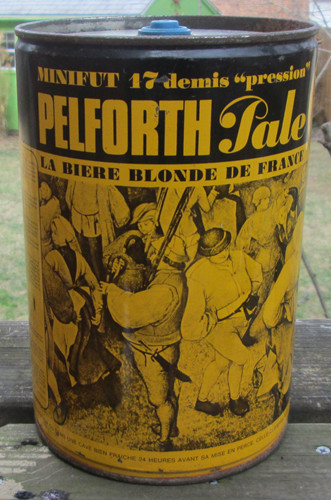 |
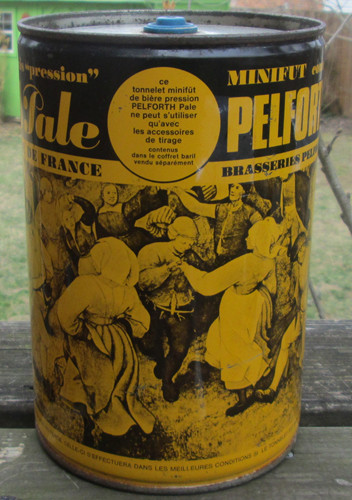 |
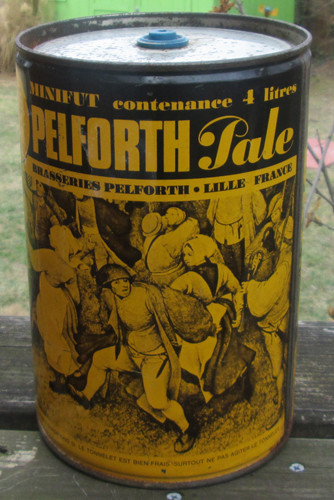 |
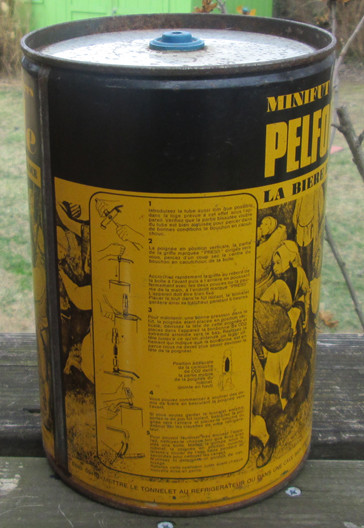 |
Pelican Brewery
The brewery was founded as the Pelican Brewery in 1921 in Lille (in northern France near the border with Belgium, hence the Flemish painting used on the can.) The brand name "Pelforth" was a combination of "Pel" for "pelican", "fort" for "strong" and the "h" to Anglicize the name. Their first product was originally named "Pelforth 43", now known as Pelforth Brown. "Pelforth Pale" was first sold in 1961. It was renamed again "Pelforth Blonde" in 1991. As of 1988 the brewery has been part of the Heineken group.
 |
| Pelican - la grande bière française, enamel advert at the Musée Européen de la Bière. Wikipedia Commons |
The Wedding Dance
(This is taken from Wikipedia with some edits on my part).
The painting on the label is The Wedding Dance, a 1566 oil-on-panel painting by the Flemish artist Pieter Bruegel the Elder (1525-1569). It is believed to be one of a set of three Bruegel works from around the same time, The Wedding Dance, The Peasant Wedding (1567), and The Peasant Dance (1569). Bruegel received the nickname "Peasant Bruegel" or "Bruegel the Peasant" for his practice of dressing up like a peasant in order to socialize at weddings and other celebrations, thereby gaining inspiration and authentic details for his genre paintings.
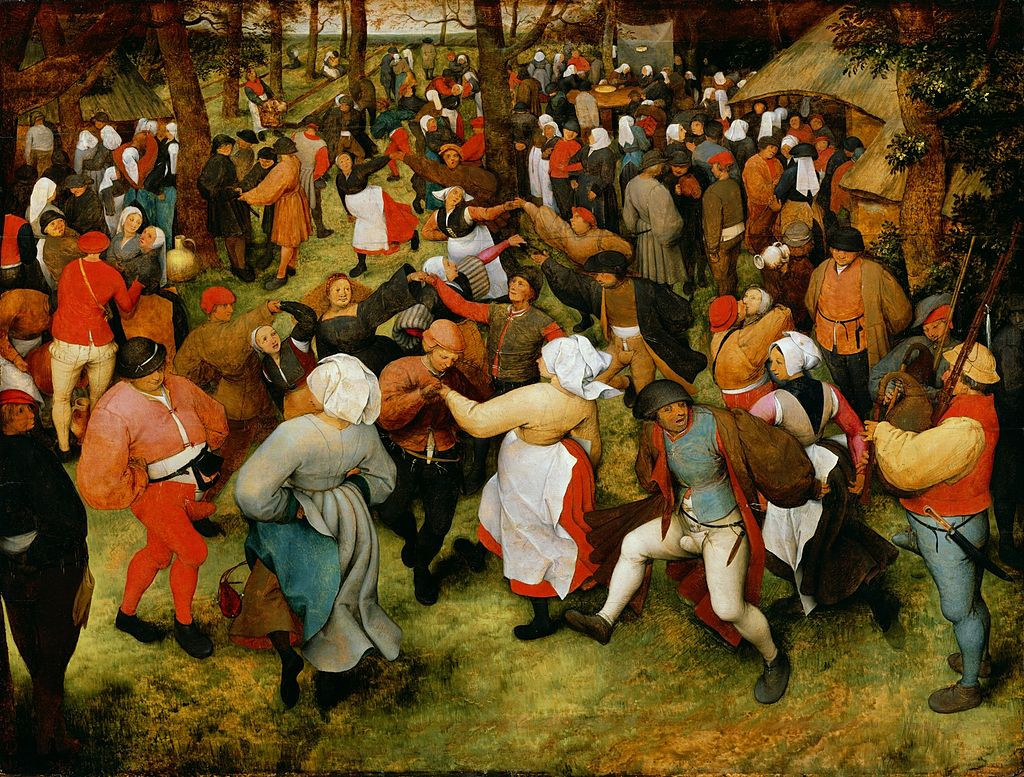 |
Here is the painting. The cropped version below shows the area shown on the can label. They wrapped the painting around the can so the piper appears twice. |
 |
The Wedding Dance depicts 125 wedding guests (only those in the painting foreground are visible on the can label) wearing clothing from the times, presented in the canvas in an apparently chaotic way in an outdoor party.The brides wore black as was customary during the Renaissance. The men wore codpieces, which were edited out on the can label, although you can see them in the painting. The codpieces were really that size, however, the posture of the male dancers (especially the guy on the left with his hands on his hips) exaggerate their size and prominence. Bruegel used this to emphasize the sexual nature of the dance further removing it from what the respectable classes would have considered proper. The can label was not alone in making those edits. It was common for museums selling postcards of the painting to do something similar.
In the middle the bride is dancing with her father. On the right of the work, there is a musician playing on a pijpzak (a Flemish bagpipe). Watching the dance from the side is a man with writing utensils hanging on his belt marking him as a writer or possibly a middle-class painter ("Peasant Bruegel"?). Behind him is a hanging tablecloth decorated with a crown and beneath it is the bride's table. Before her table, money collectors can be seen digging trenches while the wedding guests sit down and eat.
The movements of the people show that their behavior is inappropriate or a caricature of rustic buffoonery, but its representation of fertility and reproduction is presented in a joyful manner. Indeed, the painting reflects a degree of ambiguity in that it can both be seen as an attack on the stereotypical oversexed behavior of the lower orders as well as evoking a comical picture. In the sixteenth century dance was subject to a strict code and regarded by the authorities and church as a social evil. People could not swing their arms or legs or laugh too loud, as that would be considered rude. The painting therefore "expresses the peasants' liberation from the stricter limits of upper classes" 1 by failing to adhere to the expected social standards of the times.
In The Permabook of Art Masterpieces (1949) Ray Brock described Bruegel as a "hard-drinking, hard-living Flemish pleasant who packed his forty-four years of life bursting with merrymaking and furious painting — which he regarded as sheer joy". This indicates that Bruegel, despite having a moral compass and being acutely aware of the expected standards imposed by the church state at the time, was likely to have enjoyed similar festivities in his own life.
This is just one can that used classical art for its design. Many European labels copied the great masters, and Japanese cans have copied their county’s great artists. In the US Franz Hals’s (1583-1666) The Laughing Cavalier was used on both San Diego's Aztec Brewing's Old Dutch and Baltimore's Globe's Hals Beer. I discussed Hals Beer as my April 2009 COM.
Sources
"The Wedding Dance" Wikipedia (accessed 1/28/2017)
"Brasserie du Pélican" Fr/Wikipedia (Accessed 1/28/2017)
"Pelforth" Fr/Wikipedia (Accessed 1/28/2017)
Thanks to my Marymount University colleague, Dr. Mark Trowbridge of the Fine Arts department for discussing the original painting with me.
1. Quist, Robert (2004). The Theme of Music in Northern Renaissance Banquet Scenes. 166.
